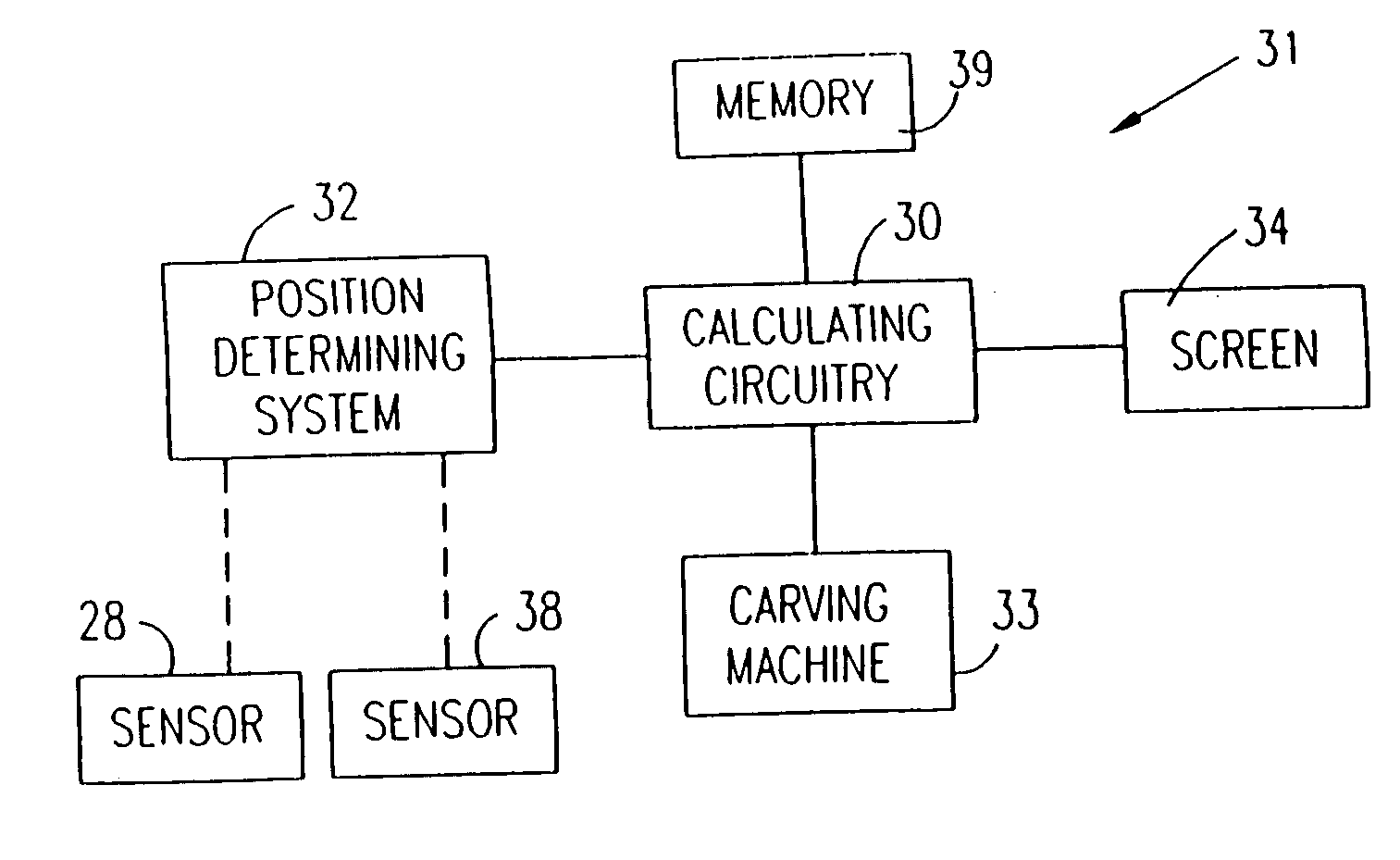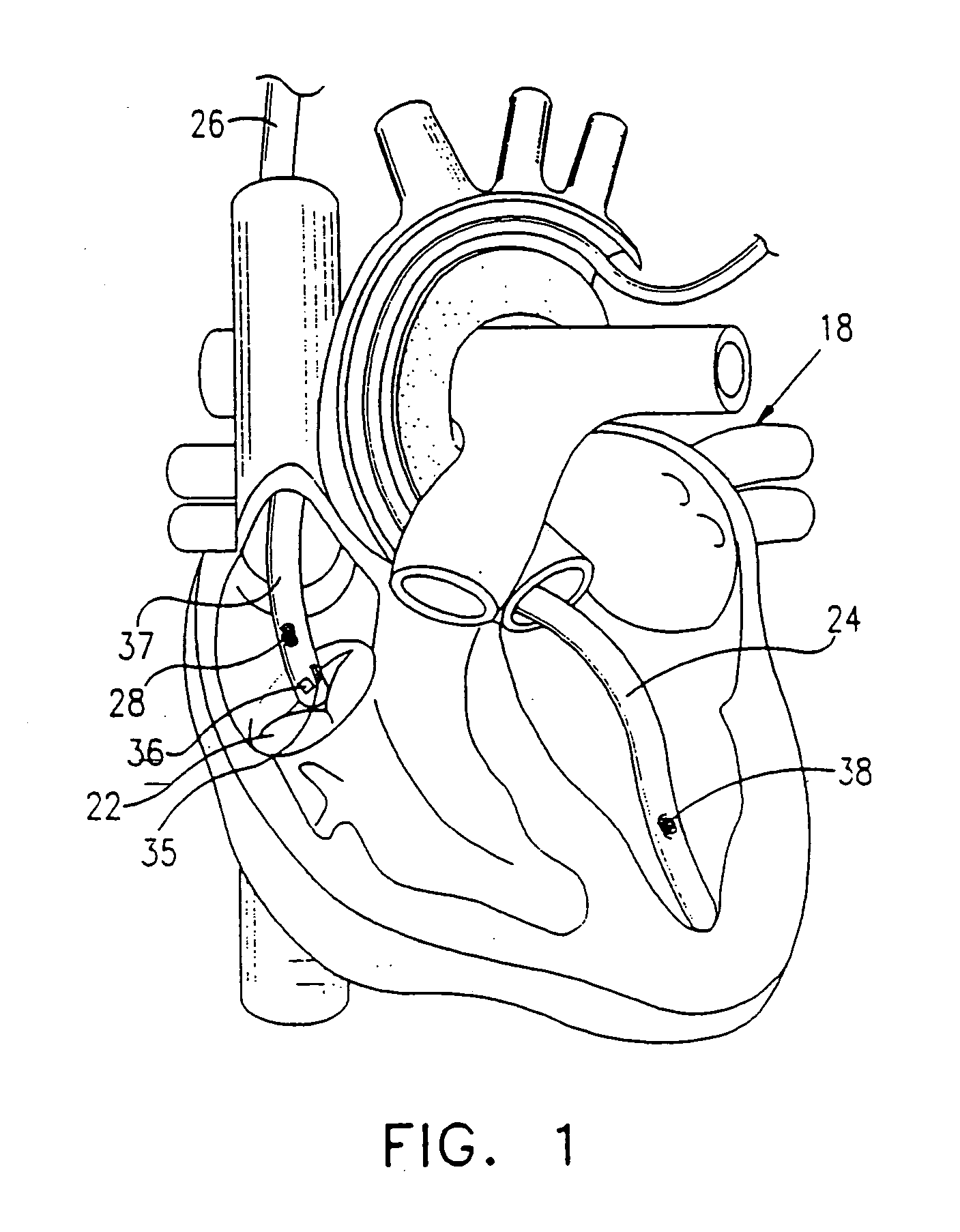Medical system using implantable sensor in bone for determining position coordinates
a technology of position determination and implantable sensors, which is applied in the direction of sensors, blood flow measurement, catheters, etc., can solve the problems of insufficient image speed, inability to accurately measure even on accurate images, and inability to accurately measure the size of organs, such as the heart, to achieve accurate measurement of organs and spaces within the human body
- Summary
- Abstract
- Description
- Claims
- Application Information
AI Technical Summary
Benefits of technology
Problems solved by technology
Method used
Image
Examples
Embodiment Construction
[0086]FIG. 1 shows a patient's heart 18 with a tricuspid valve 22 therein, which is measured in accordance with a preferred embodiment of the present invention. A measurement catheter 26 is situated within the patient's heart near valve 22. A reference catheter 24, comprising a position sensor 38, is situated at a fixed point relative to heart 18, preferably at the apex thereof, such that the movements of catheter 24 coincide with the movements of heart 18.
[0087] Catheter 26 is preferably thin and durable and is suitable for insertion into and maneuvering within the patient's heart. Such catheters are described, for example, in PCT patent application US95 / 01103 and in U.S. Pat. Nos. 5,404,297, 5,368,592, 5,431,168, 5,383,923, the disclosures of which are incorporated herein by reference. Preferably, catheter 26 comprises a pressure sensor 36, at least one position sensor 28, and one or more working channels 37 which allow attachment of catheter 26 by suction to points within heart ...
PUM
 Login to View More
Login to View More Abstract
Description
Claims
Application Information
 Login to View More
Login to View More - R&D
- Intellectual Property
- Life Sciences
- Materials
- Tech Scout
- Unparalleled Data Quality
- Higher Quality Content
- 60% Fewer Hallucinations
Browse by: Latest US Patents, China's latest patents, Technical Efficacy Thesaurus, Application Domain, Technology Topic, Popular Technical Reports.
© 2025 PatSnap. All rights reserved.Legal|Privacy policy|Modern Slavery Act Transparency Statement|Sitemap|About US| Contact US: help@patsnap.com



